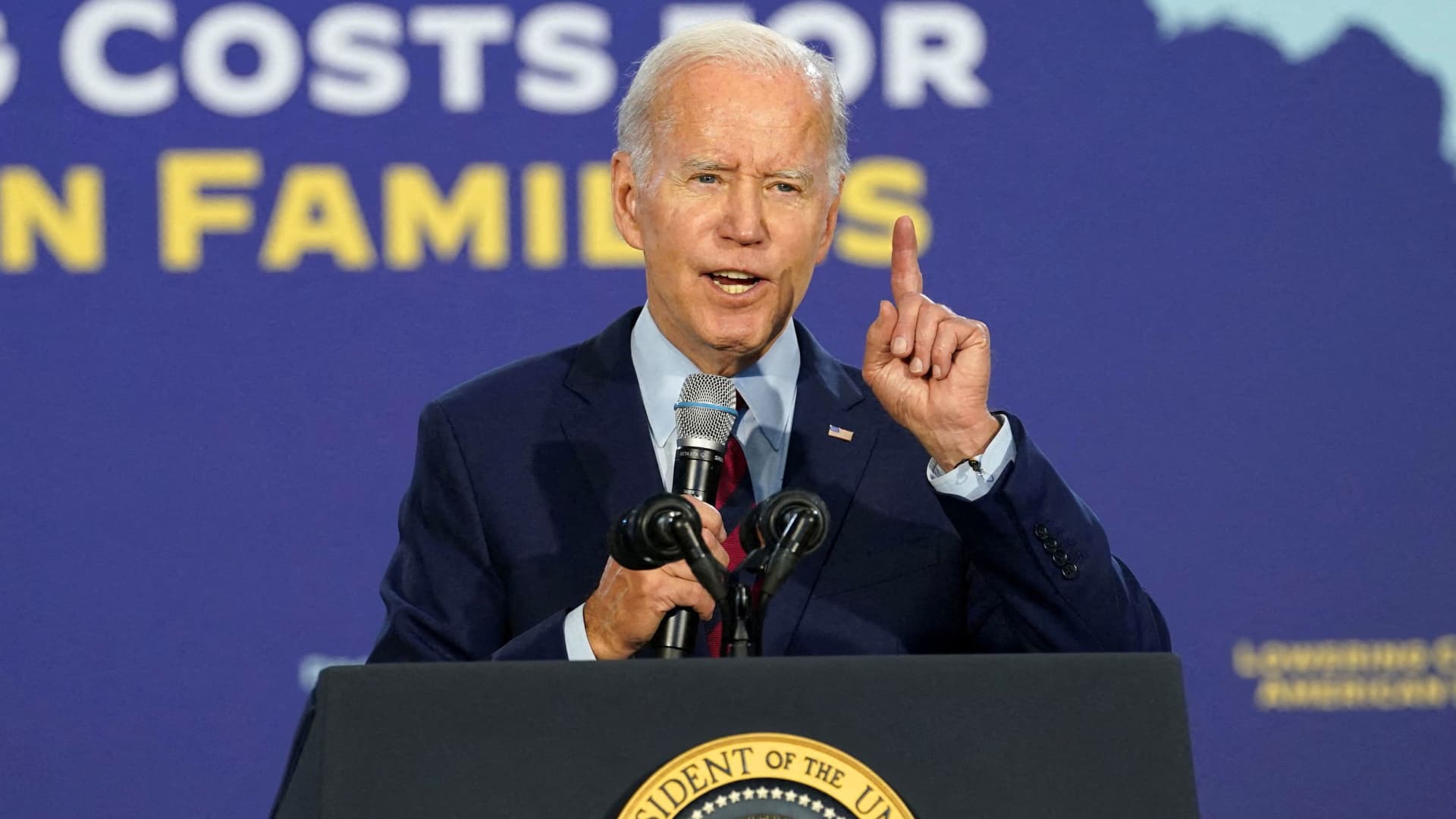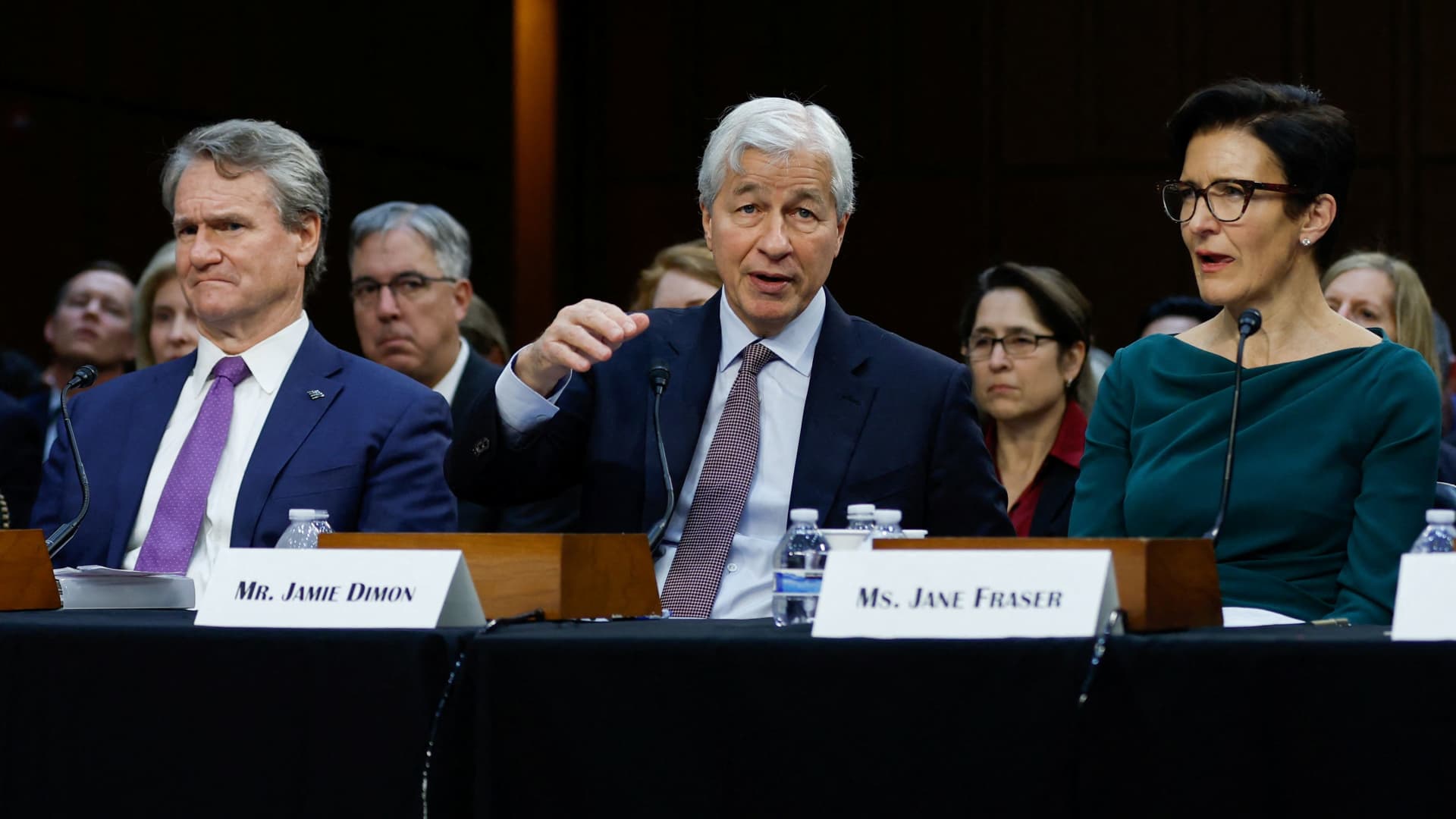President Joe Biden speaks about protecting Social Security, Medicare, and lowering prescription drug costs, during a visit to OB Johnson Park and Community Center, in Hallandale Beach, Florida, on Nov. 1, 2022.
Kevin Lamarque | Reuters
The Biden administration on Thursday opened the door to seizing the patents of certain costly medications from drugmakers in a new push to slash high drug prices and promote more pharmaceutical competition.
The administration unveiled a framework outlining the factors federal agencies should consider in deciding whether to use a controversial policy, known as march-in rights, to take patents for drugs developed with taxpayer funds and share them with other pharmaceutical companies if the public cannot “reasonably” access the medications. Doing so could lead to the development of lower-priced generic alternatives, which could cut into key drug companies’ profits and reduce costs for patients.
For the first time, officials can now factor in a medication’s price in deciding to break a patent.
It is unclear whether and how federal agencies will use march-in rights under the new framework. Notably, “no agency to date” has exercised the policy, which came about under the Bayh-Dole Act of 1980, a senior administration official said during a call with reporters Wednesday.
But the administration will “make it clear that when drug companies won’t sell taxpayer-funded drugs at reasonable prices, we will be prepared to allow other companies to provide those drugs for less,” Lael Brainard, White House national economic advisor, told reporters.
The framework will be open to public comment for 60 days.
The administration’s announcement follows a nearly nine-month review of the federal government’s march-in rights, which aimed to update the framework for using the policy.
It also comes as President Joe Biden makes lowering U.S. drug prices a key pillar of his health-care agenda and reelection platform for 2024.
Political pressure has pushed health-care companies to launch their own efforts to lower drug prices. CVS on Tuesday unveiled a new prescription drug pricing model, which could potentially cut costs for patients at the pharmacy counter.
Nearly 3 in 10 Americans struggle to pay for the drugs they need, according to a July survey from health policy research organization KFF. And some research suggests that U.S. patients spend about $1,200 more per person on prescription medications than those in any other nation.
Yet taxpayers have spent tens of billions of dollars to fund hundreds of drugs in the last decade — which the Biden administration believes could justify more government action to cut prices.
The administration’s new push to use march-in rights could eventually have major ramifications for the pharmaceutical industry, which has long argued that the policy discourages research and development of new drugs.
Activists protest the price of prescription drug costs in front of the U.S. Department of Health and Human Services (HHS) building on October 06, 2022 in Washington, DC.
Anna Moneymaker | Getty Images
Drugmakers have argued that seizing the patent for a medication makes that treatment vulnerable to competition, which can reduce a company’s revenue and limit how much it can reinvest into drug development.
That pushback has made the federal government reluctant to use march-in rights in the past, which has frustrated progressives on Capitol Hill.
On Thursday, Sen. Elizabeth Warren told CNBC that the Biden administration’s new framework “is using the right approach overall, which is use every tool in the toolbox to bring down drug prices.”
“When there’s no competition in a market, then that falls hard on people who need that drug,” the Massachusetts Democrat said. “It also falls hard on taxpayers who end up paying for it through other government programs.”
She added that march-in rights have existed in the law for a long time. But that power hasn’t been “picked up and used very aggressively,” so she is glad to see the administration “move in this direction.”
Meanwhile, the pharmaceutical industry’s largest lobbying group slammed the Biden administration’s push to exercise march-in rights in a statement.
“This would be yet another loss for American patients who rely on public-private sector collaboration to advance new treatments and cures,” said a spokesperson for the Pharmaceutical Research and Manufacturers of America, which represents drugmakers such as Pfizer, Eli Lilly and Johnson & Johnson. “The Administration is sending us back to a time when government research sat on a shelf, not benefitting anyone.”
The White House feigned disappointment about the lobbying group’s stance in a post on X, formerly known as Twitter.
“Oh no. We’ve upset Big Pharma again,” the White House said.
Both the Obama and Trump administrations had rejected march-in requests from lawmakers and patient advocates. The Trump administration even proposed a rule that would prevent the government from exercising the policy based on the high price of a drug alone.
The Biden administration chose not to finalize that proposal earlier this year, according to a release from the White House on Thursday.
But the Biden administration has also shied away from using march-in rights up until now. In March, the administration declined to break the patent of the costly prostate cancer drug Xtandi from Astellas Pharma and Pfizer.
The drugmakers charge more than $150,000 a year for Xtandi in the U.S. before insurance and other rebates, but charge a fraction of that price in other developed countries.
The Biden administration has attempted to lower drug prices in other ways, such as giving Medicare the power to negotiate drug prices for the first time in the federal program’s 60-year history as part of the Inflation Reduction Act.
But Xtandi was excluded from the first 10 medications the government selected for negotiations, which prompted Astellas Pharma to drop a lawsuit it filed to halt the price talks.
Also on Thursday, the Biden administration unveiled efforts that aim to counter allegedly anti-competitive practices by big health-care companies.
Some target private equity firms, which have been buying up physician practices, nursing homes and other health-care providers. Private equity ownership in the health-care industry has ballooned, with approximately $750 billion in deals between 2010 and 2020, according to a report from the American Antitrust Institute.
The administration is concerned that corporate owners are “maximizing their profits at the expense of patients’ health and safety, while increasing costs for patients and taxpayers alike,” according to a White House fact sheet.
Don’t miss these stories from CNBC PRO:








